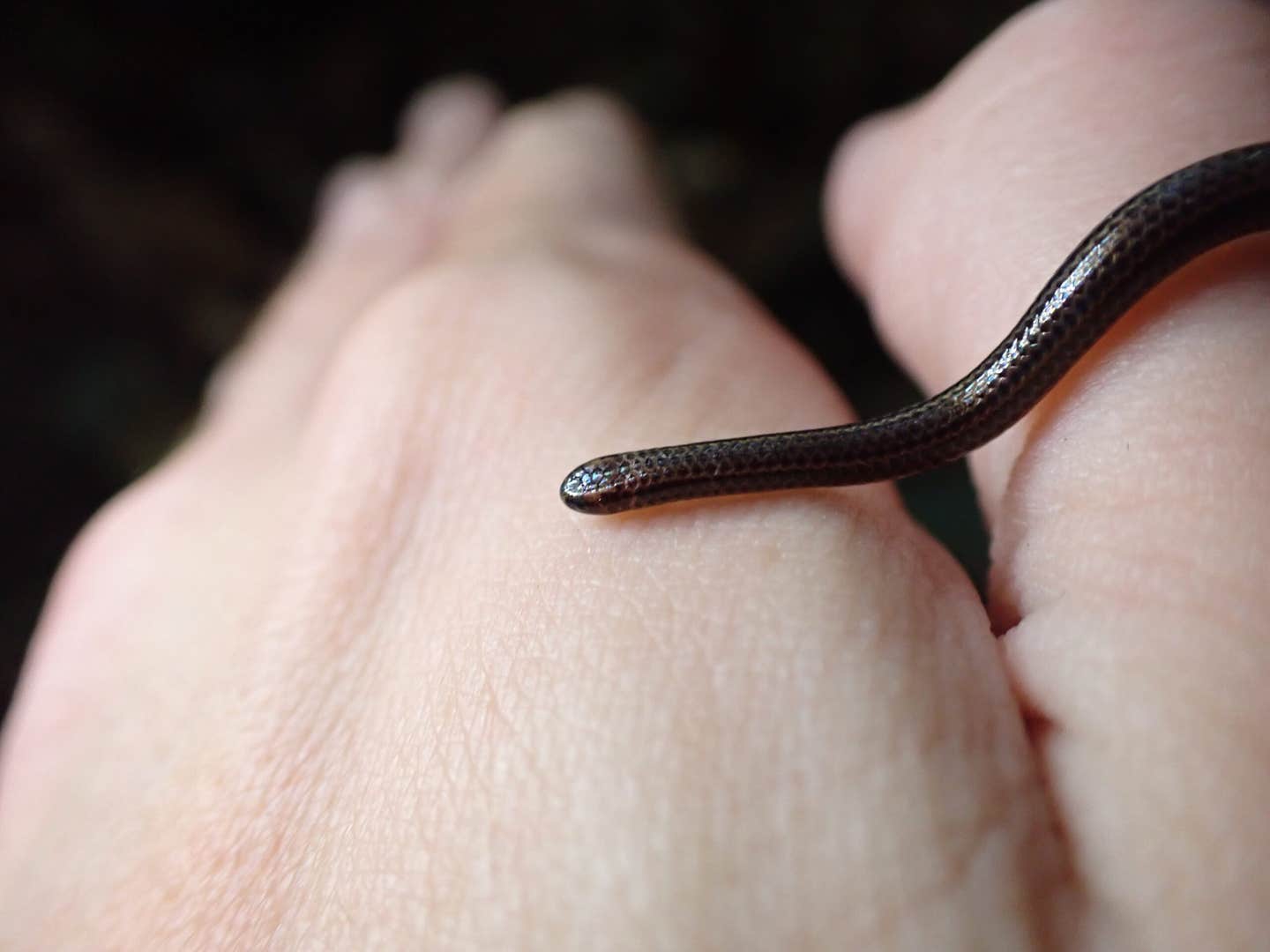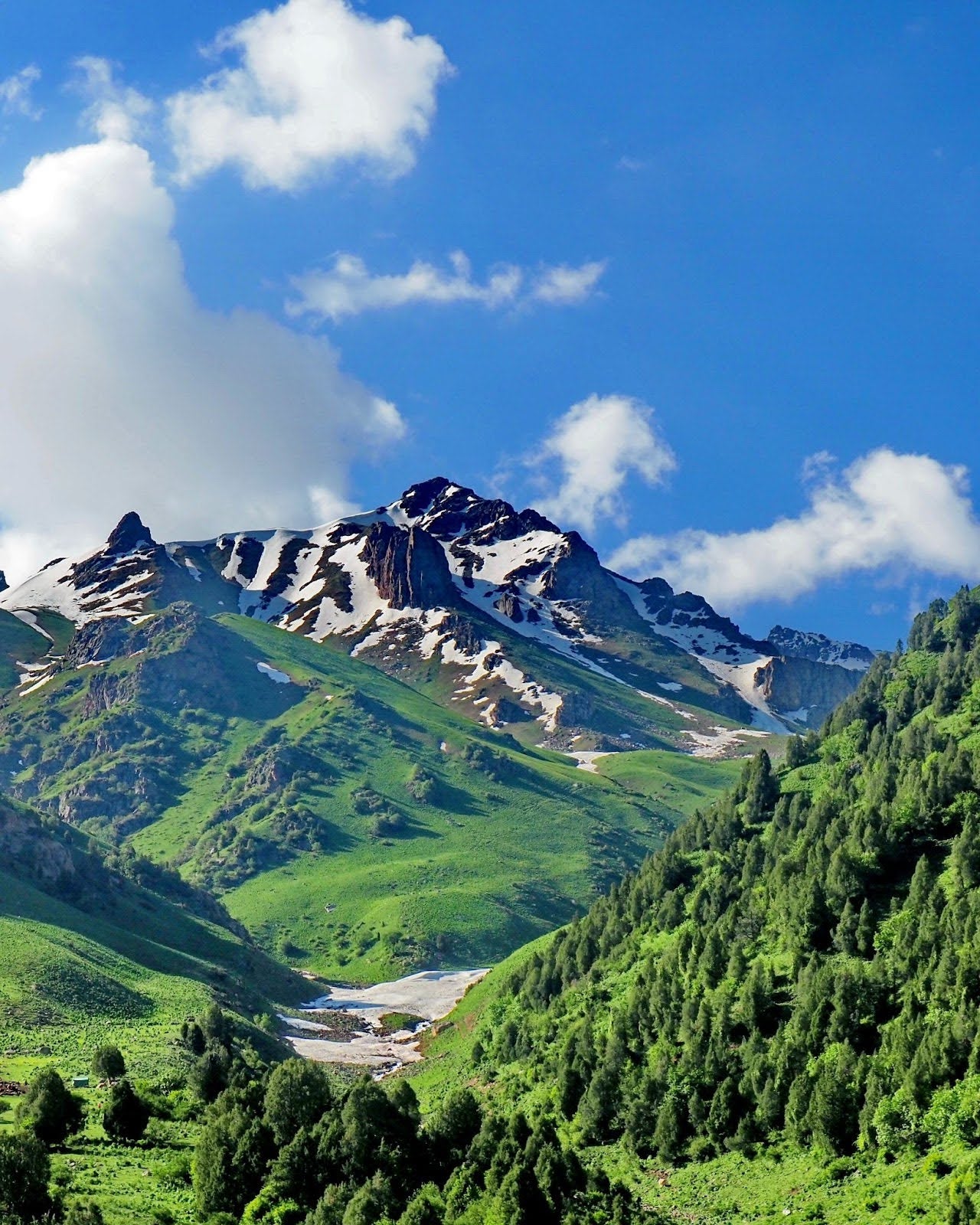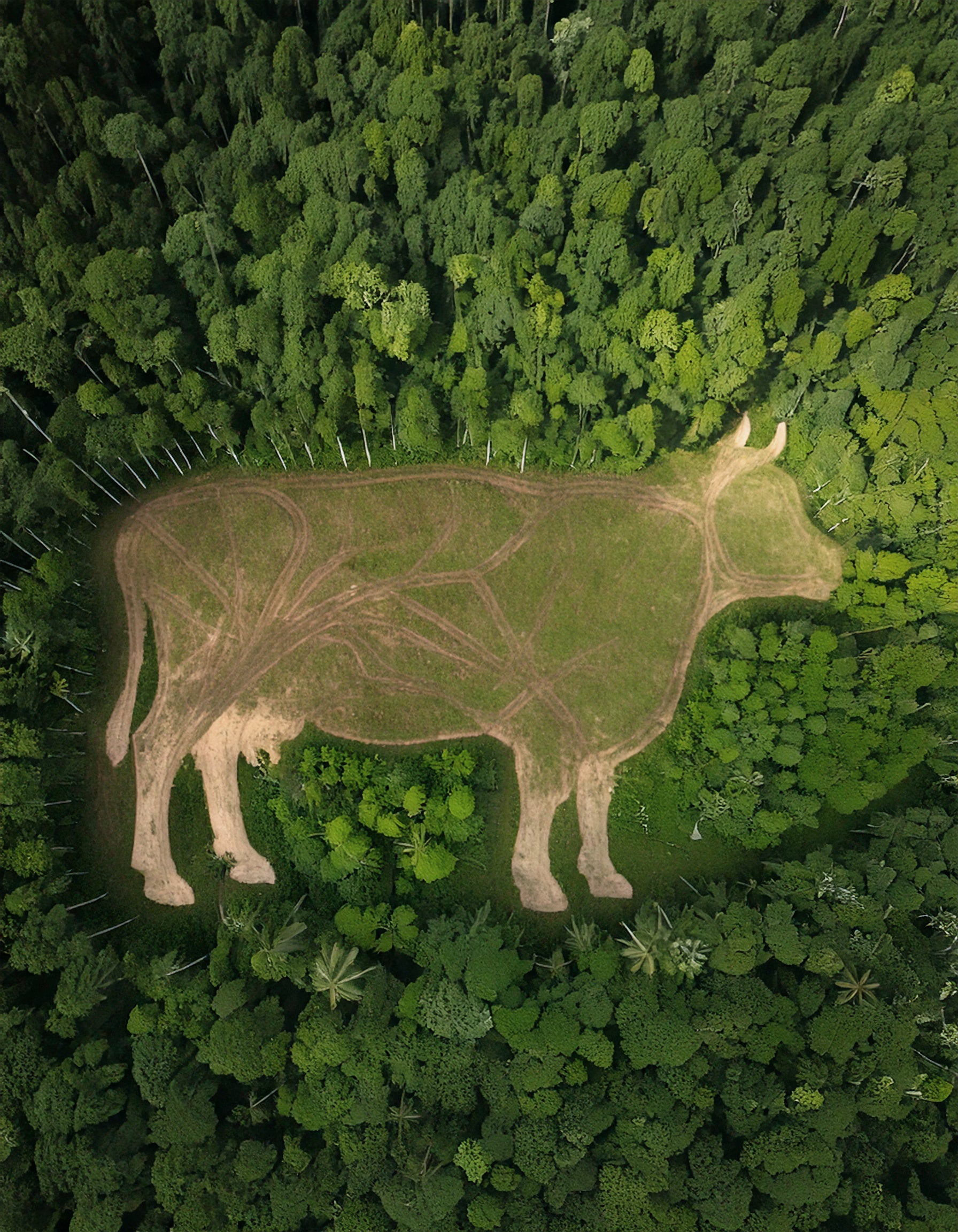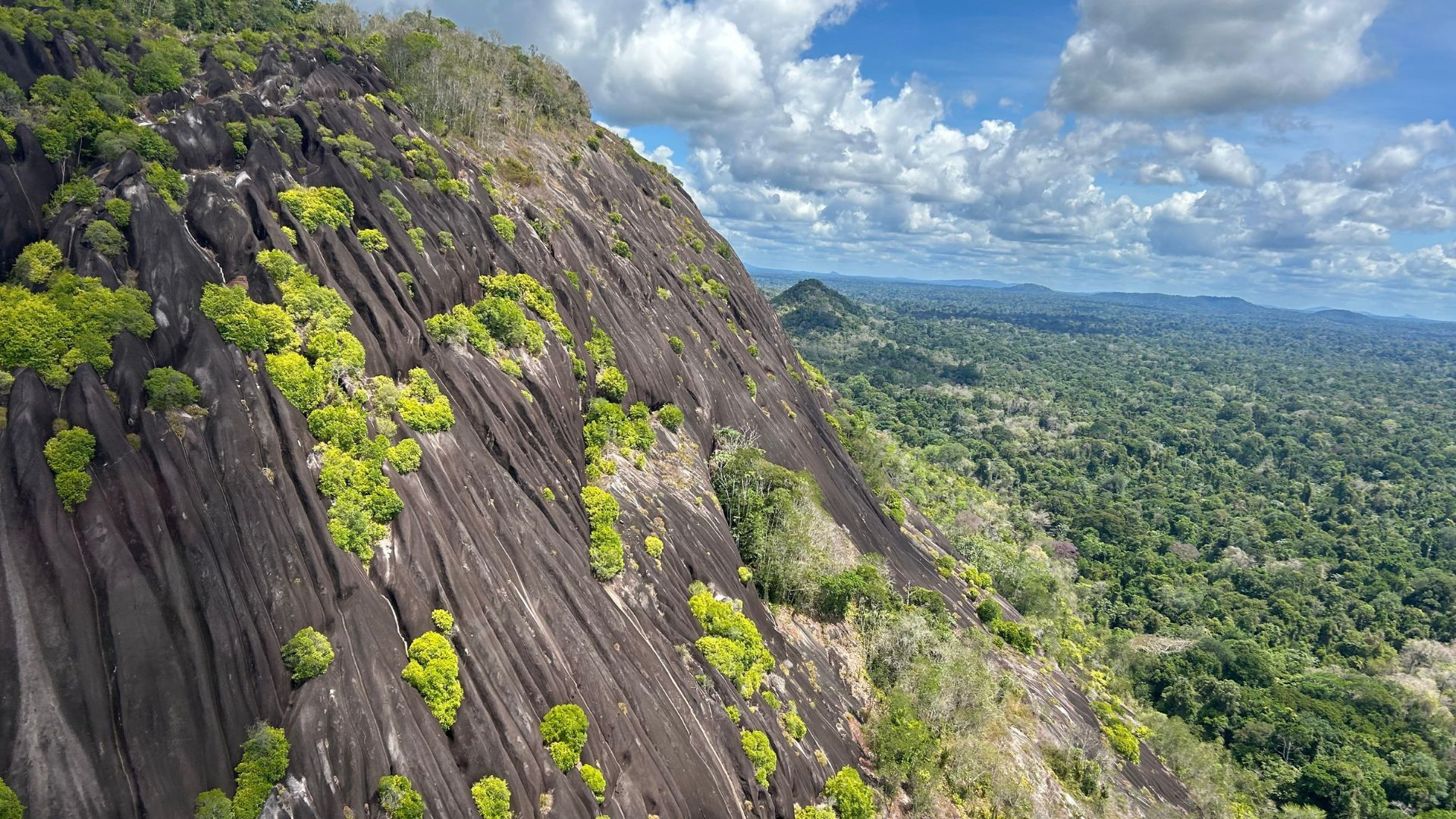For immediate release
July 23, 2025
Download photos
The world’s smallest snake, the Barbados threadsnake (Tetracheilostoma carlae), was rediscovered under a rock in central Barbados during an ecological survey in March by the Barbados Ministry of the Environment and National Beautification and Re:wild. The Barbados threadsnake had been lost to science for nearly 20 years—meaning it had not had a sighting verified and documented by a scientist—and was on a global list of 4,800 plant, animal and fungi species lost to science compiled by Re:wild’s Search for Lost Species. The Barbados Ministry of the Environment and Beautification had been searching for the threadsnake and several other endemic reptiles for more than a year as part of the Conserving Barbados’ Endemic Reptiles (CBER) project.
“Barbados threadsnakes are blind snakes, so they’re very cryptic,” said Connor Blades, a project officer with the Ministry of Environment in Barbados, who helped rediscover the threadsnake. “They’re quite rare also, it seems. There have only been a handful of confirmed sightings since 1889, so there are not many people who have ever seen it, unfortunately.”
The Barbados threadsnake is at the limit of how small a snake can be, measuring only about 3 to 4 inches long (9 to 10 centimeters) when it is fully grown. Each confirmed sighting of the species has had several decades between them, leading scientists to believe that the snake has possibly always been rare and difficult to find in the wild.
The threadsnake also closely resembles the Brahminy blind snake, or flowerpot snake, a small invasive snake species that was inadvertently introduced to Barbados in recent decades. Scientists often need a magnifying glass to help them clearly identify the two snakes.
“I began to look over the snake and it was clear to me that I really needed to take it to a microscope to get a proper look at it,” said Blades. “The morphological differences between the threadsnake and blind snake are really difficult to tell by eye, particularly because it was the first threadsnake we had seen, so we weren’t familiar with the species yet.”
During the survey in March, Justin Springer, Caribbean program officer for Re:wild, and Blades began looking under rocks for any signs of tiny threadsnakes. One particular rock trapped under a tree root caught their attention.
“I was making a joke and in my head I said, ‘I smell a threadsnake,’” said Springer. “I just had a feeling, but I couldn’t be sure because we turned over a lot of rocks before that and we saw nothing.”
Blades loosened the rock from under the tree root and pulled it up. Underneath the rock was an earthworm and a tiny snake. Springer quickly picked up the snake to take a closer look, which at first glance seemed like it could be the Barbados threadsnake.
“When you are so accustomed to looking for things and you don’t see them, you are shocked when you actually find it,” said Springer. “You can’t believe it. That’s how I felt. You don’t want to get your hopes up too high.”
Blades took the snake to the University of the West Indies and examined it under a microscope before returning the snake back to the forest in central Barbados. It had all the characteristics of a threadsnake—pale orange dorsal lines running from its head to tail, eyes located on the side of its head, a rostral scale on its nose and no gland lines on its head.
The CBER project now has a better idea of where and when to search for the threadsnake in the future. It is planning to continue surveying the island to better understand the threadsnake’s range and design conservation actions to protect it and its habitat.
Forests, like the one in which the threadsnake was rediscovered, only cover a small area of Barbados. They are mostly confined to the undeveloped Scotland District and the network of gullies that radiate through the island. Ninety-eight percent of the island’s primary forest has been cleared for agriculture since the colonial era began more than 500 years ago.
“It’s an important reservoir for biodiversity on the island,” said Blades referring to the forests where the threadsnake was found. “If the threadsnake population isn’t very dense, I’m worried about their ability to find mates—particularly if their habitat is under threat and being degraded.”
The Barbados threadsnake reproduces sexually and females lay a clutch of only one egg. The Brahminy blind snake, on the other hand, is capable of parthenogenesis, which means that females are able to produce fertile eggs without mating.
Many endemic species in Barbados have been driven extinct by habitat destruction and invasive species, including the Barbados racer, Barbados skink, Barbados rice rat, Barbados rail and Cole’s cave shrimp. The Barbados skink and Barbados racer were both likely driven to extinction by the Indian mongoose, which was introduced to Barbados in the 1870s to control rats.
“The threadsnake’s rediscovery is also a call to all of us as Barbadians that forests in Barbados are very special and need protection,” said Springer. “Not just for the threadsnake, but for other species as well. For plants, animals and our heritage.”
# # #
Photo: A Barbados threadsnake, a species lost to science for 20 years, was rediscovered during an ecological survey in March. (Photo by Conor Blades)
Barbados Ministry of the Environment and National Beautification
The goal of the Biodiversity Conservation and Management Section of the Ministry of Environment and National Beautification, Green and Blue Economy of the Government of Barbados is to undertake effective management of the biodiversity and land resources of Barbados, particularly in degraded areas, and to contribute to their conservation, effective management, and increased awareness of the importance of local biodiversity and ecosystems, and their contribution to local development. The Programme aims to contribute to the conservation of local biodiversity by defining the guiding principles, vision, long-term aims and policies for the management of biological resources in Barbados; increasing the awareness of the Barbadian public of the importance of the natural environment, its conservation and management, and the development and implementation of a program of action to facilitate effective management of the shared ecological resources of Barbados. To learn more, visit biodiversity.gov.bb, or follow on Instagram and Facebook.
Re:wild
Re:wild protects and restores the wild. We have a singular and powerful focus: the wild as the most effective solution to the interconnected climate, biodiversity and human wellbeing crises. Founded by a group of renowned conservation scientists together with Leonardo DiCaprio, Re:wild is a force multiplier that brings together Indigenous peoples, local communities, influential leaders, nongovernmental organizations, governments, companies and the public to protect and rewild at the scale and speed we need. Learn more at rewild.org.
Contact
Devin Murphy
dmurphy@rewild.org
+1 512 686-6188

Devin Murphy
Writer
Devin Murphy is Re:wilds’s senior communications specialist and helps Re:wild and its partners tell stories about the work they do to protect wildlife and wildlands around the planet. Her favorite stories about conservation include fascinating and little-known species and the dedicated humans protecting them.



